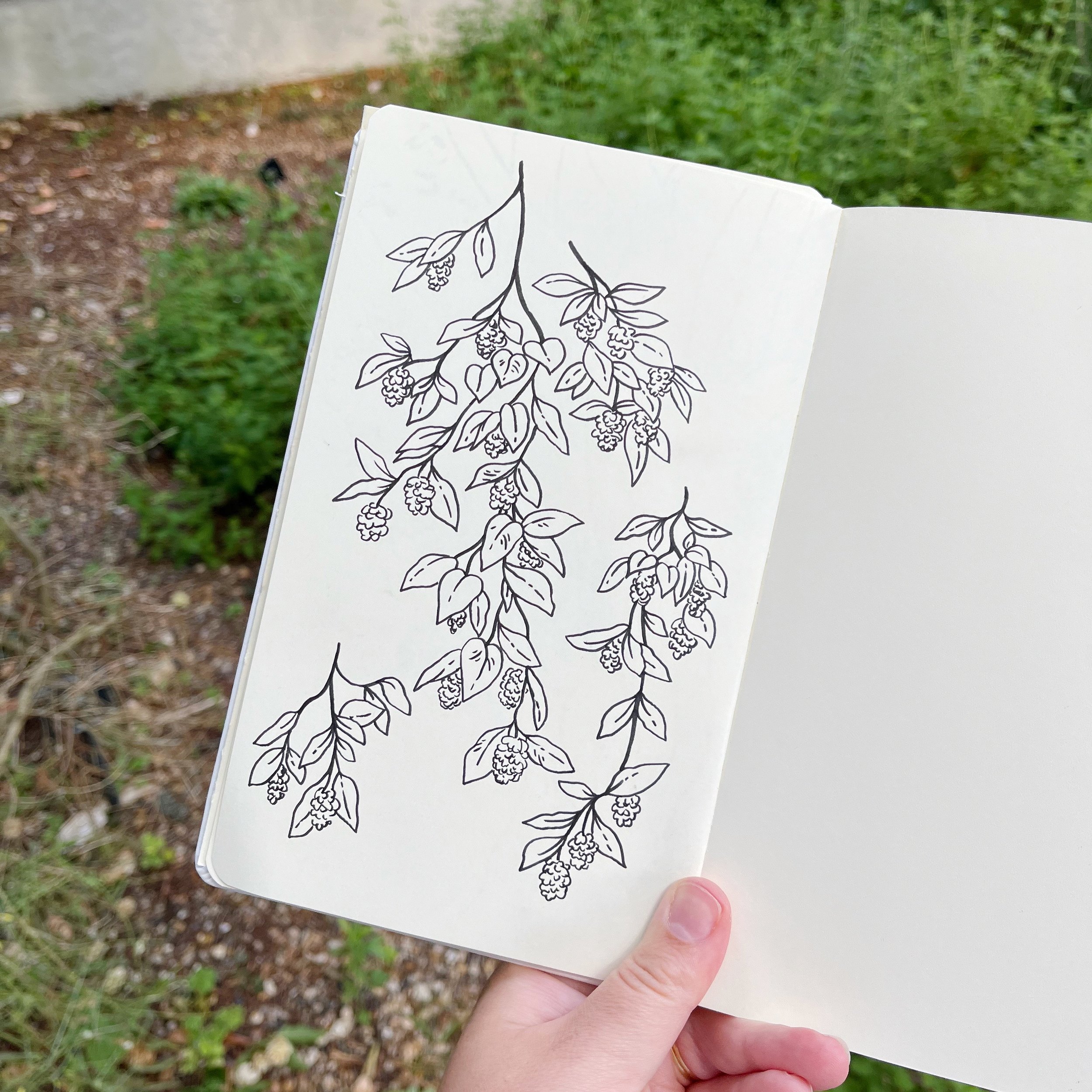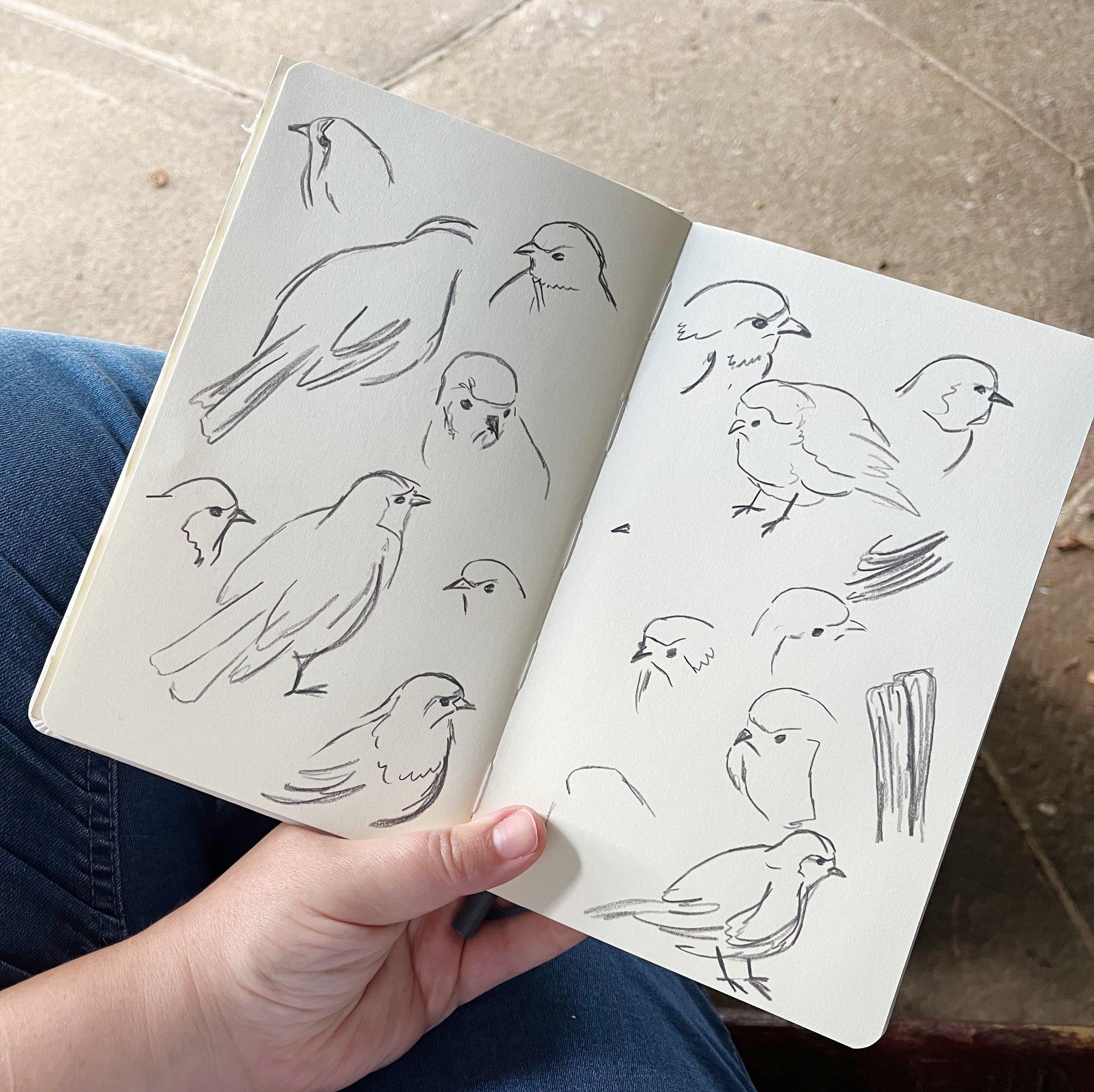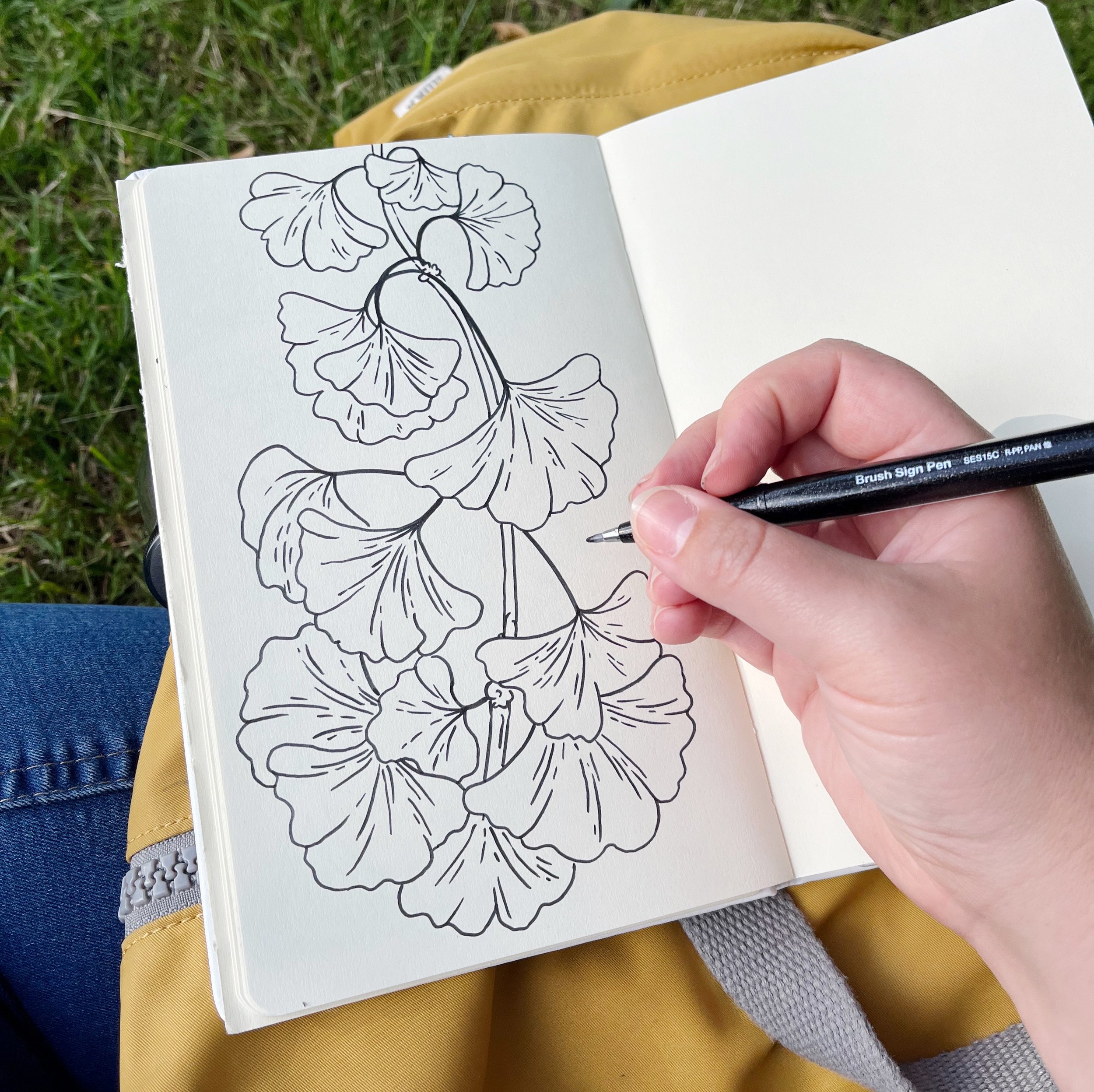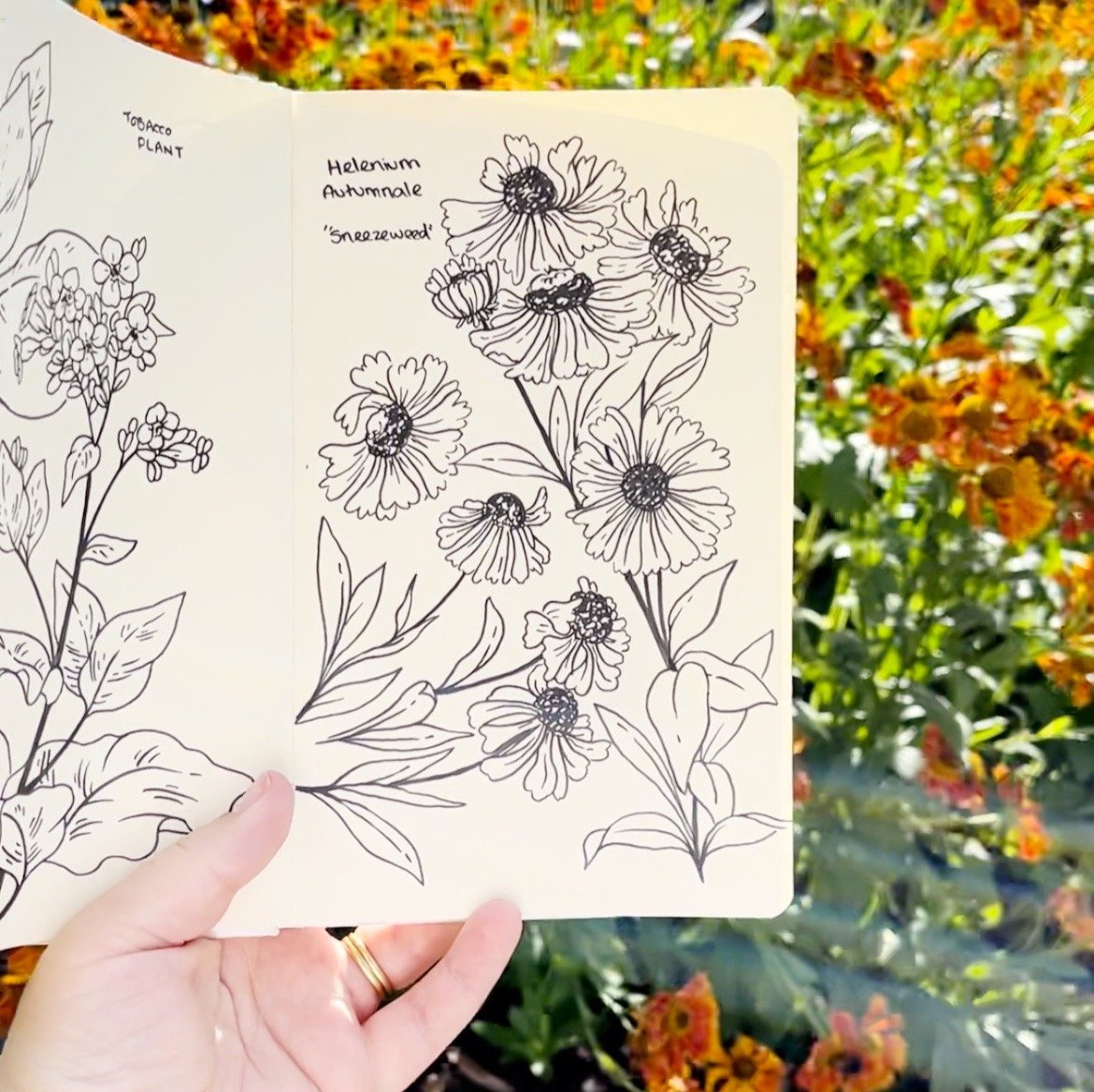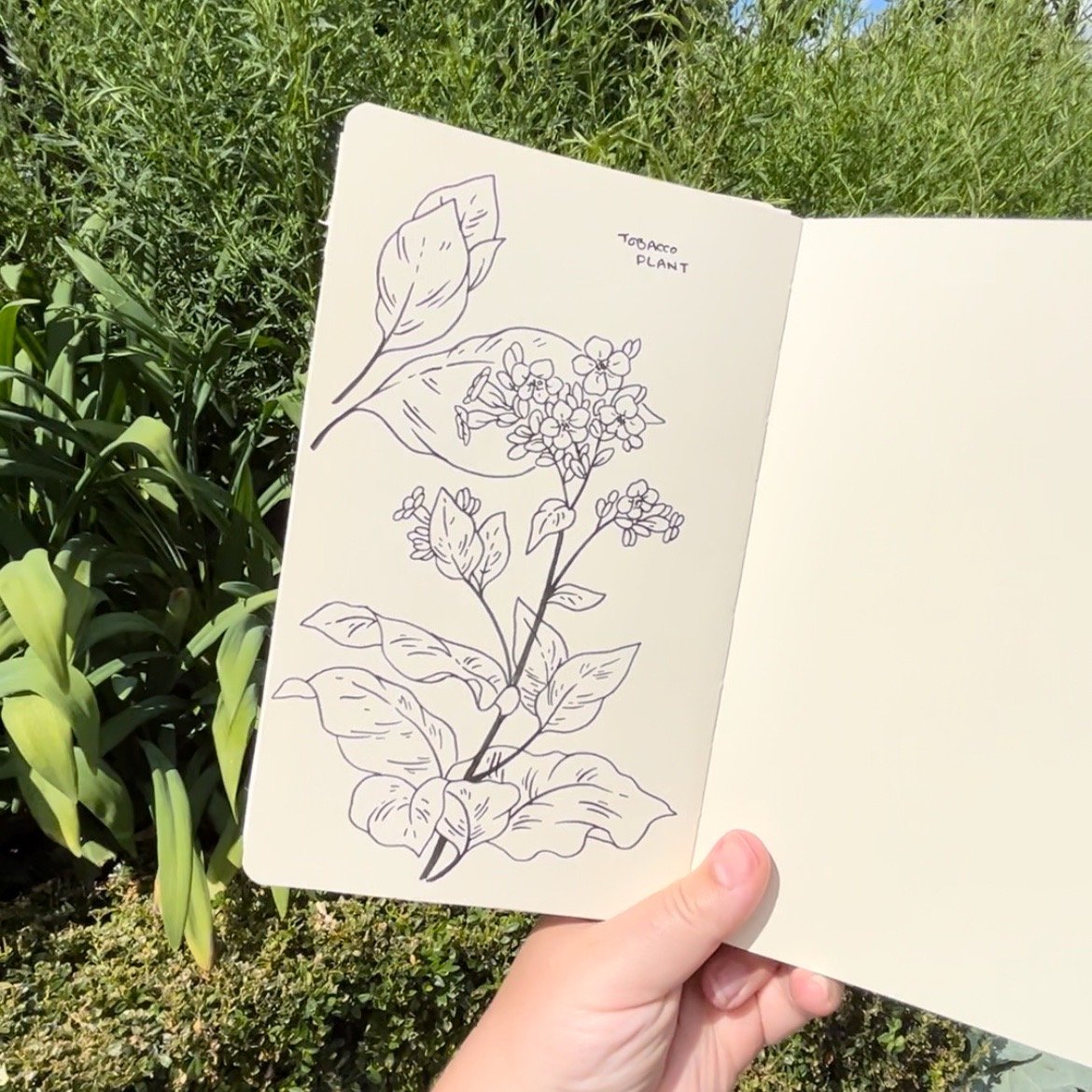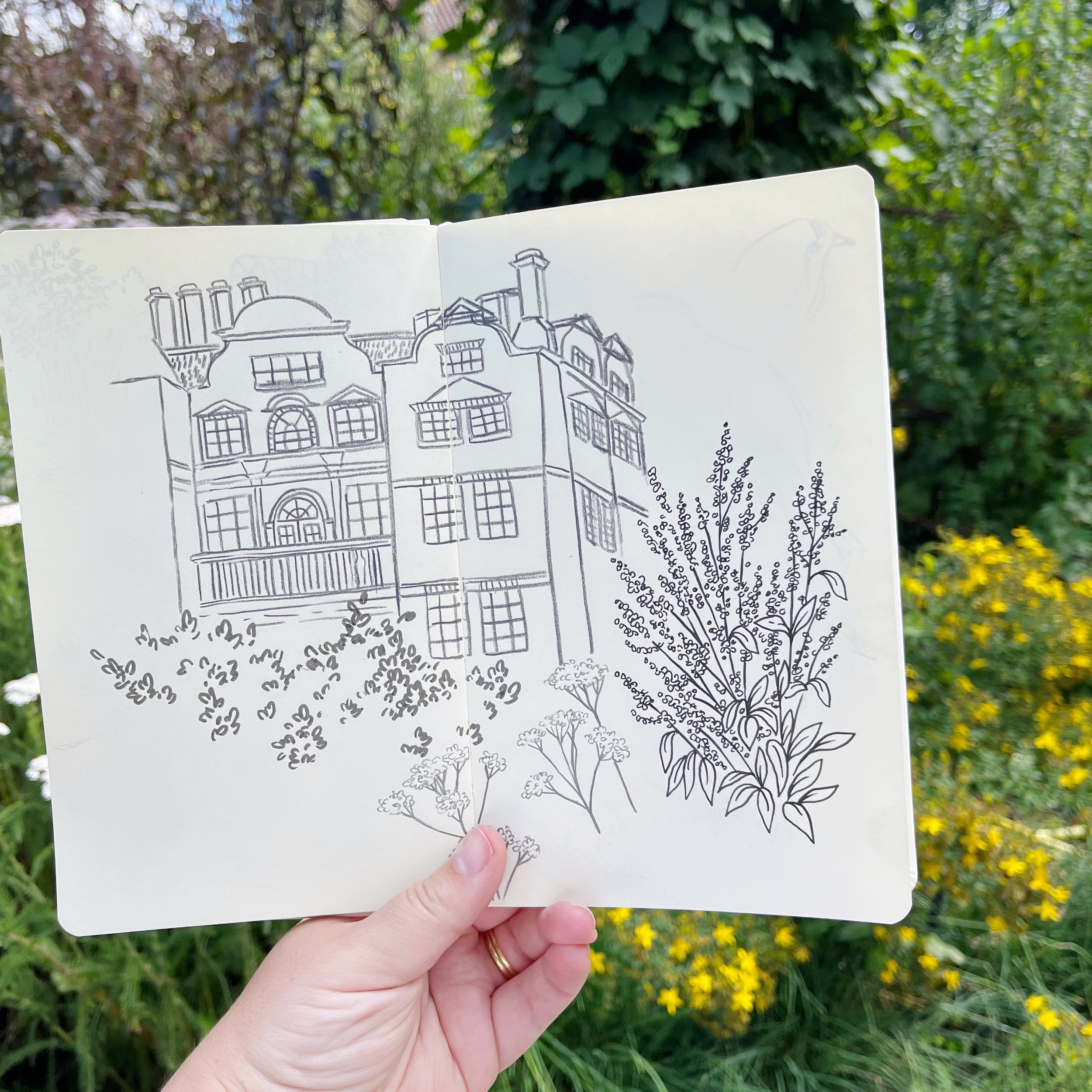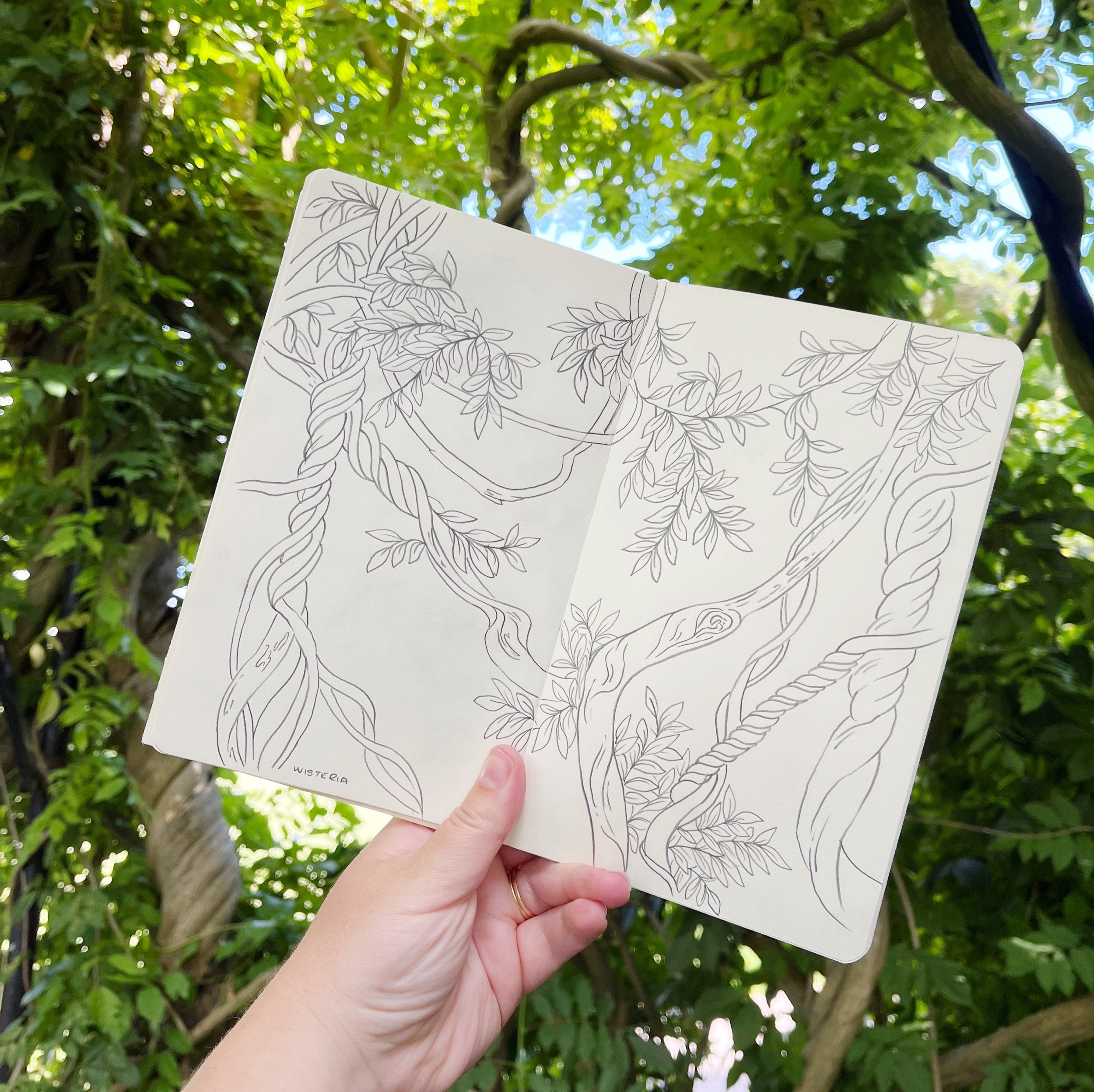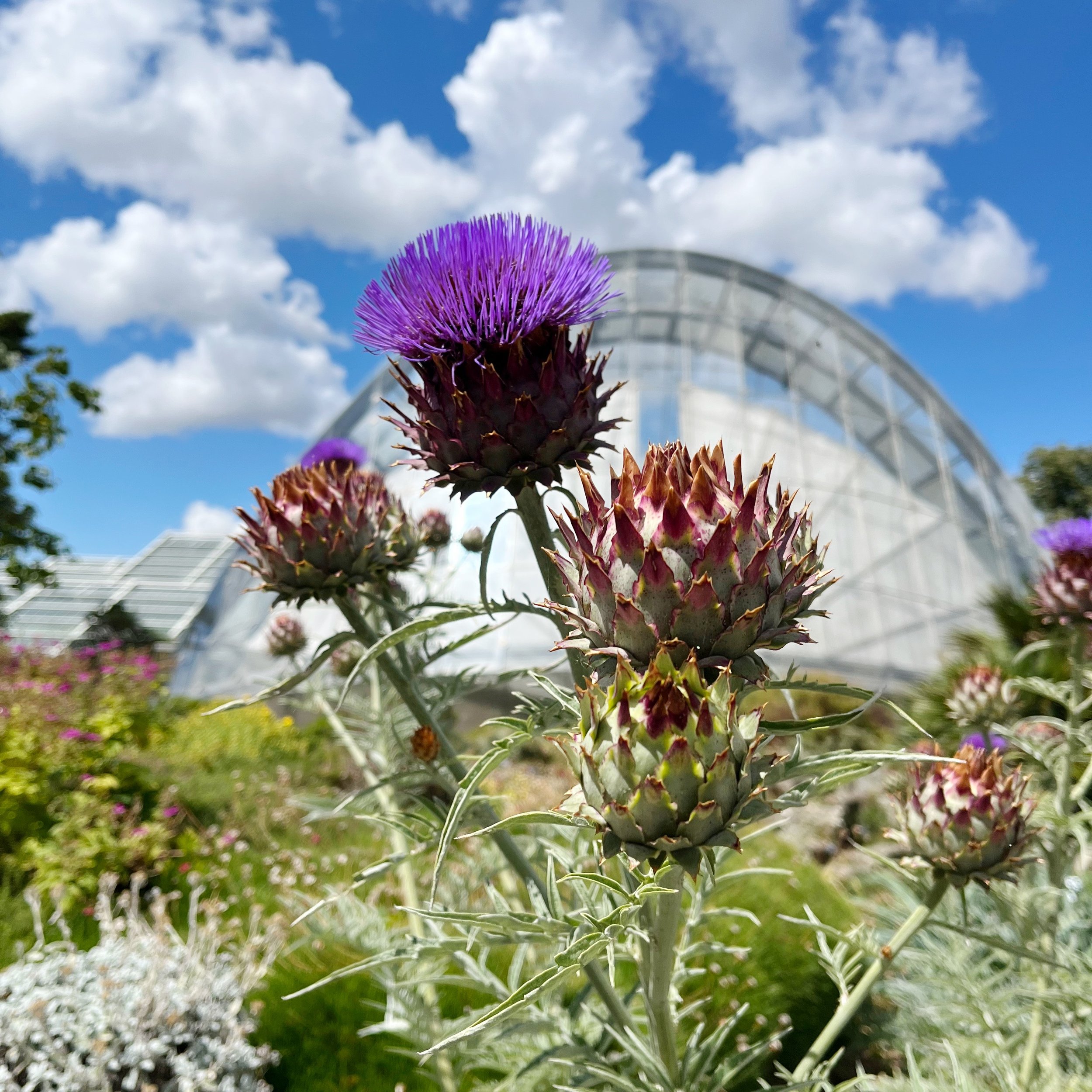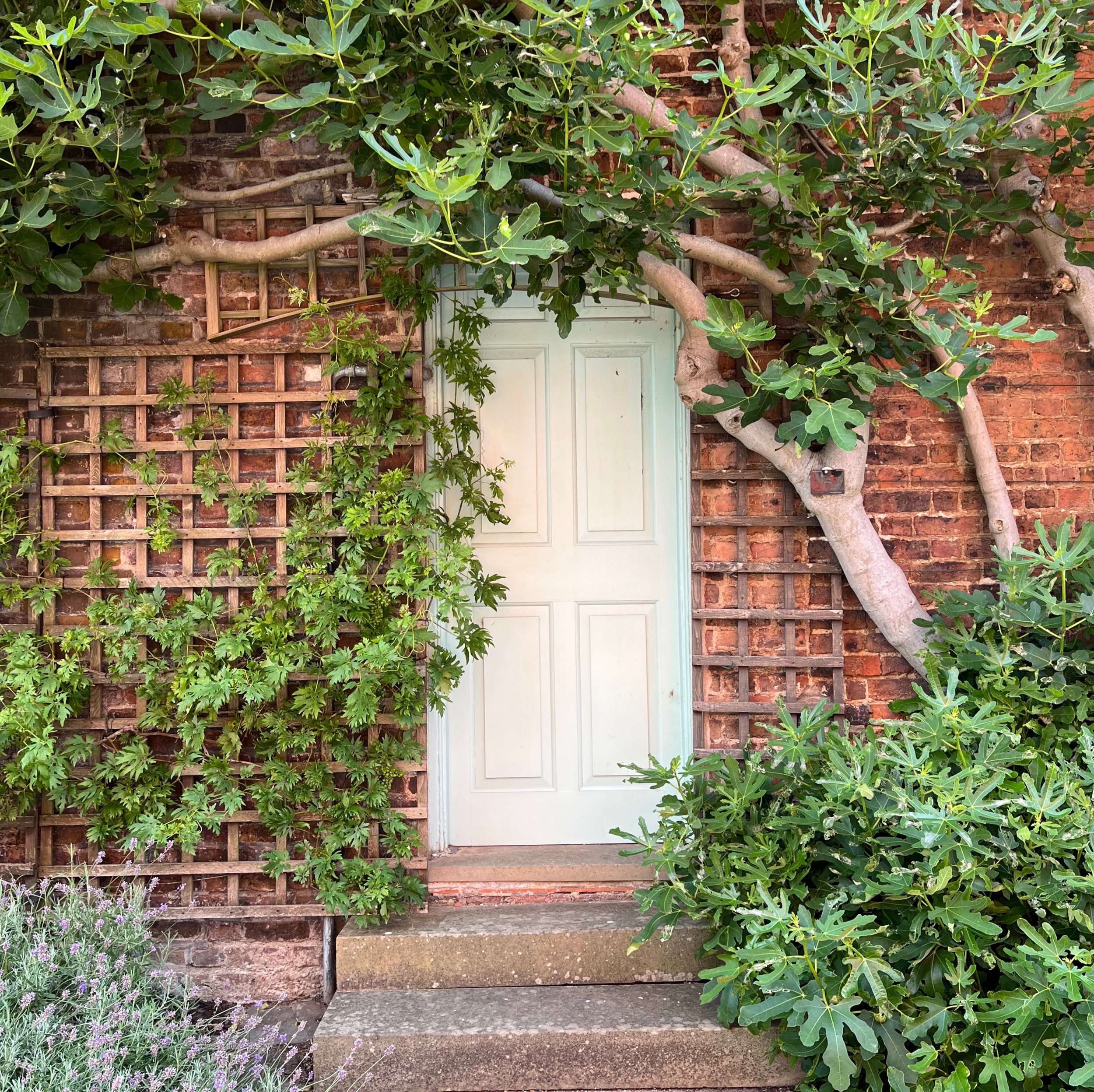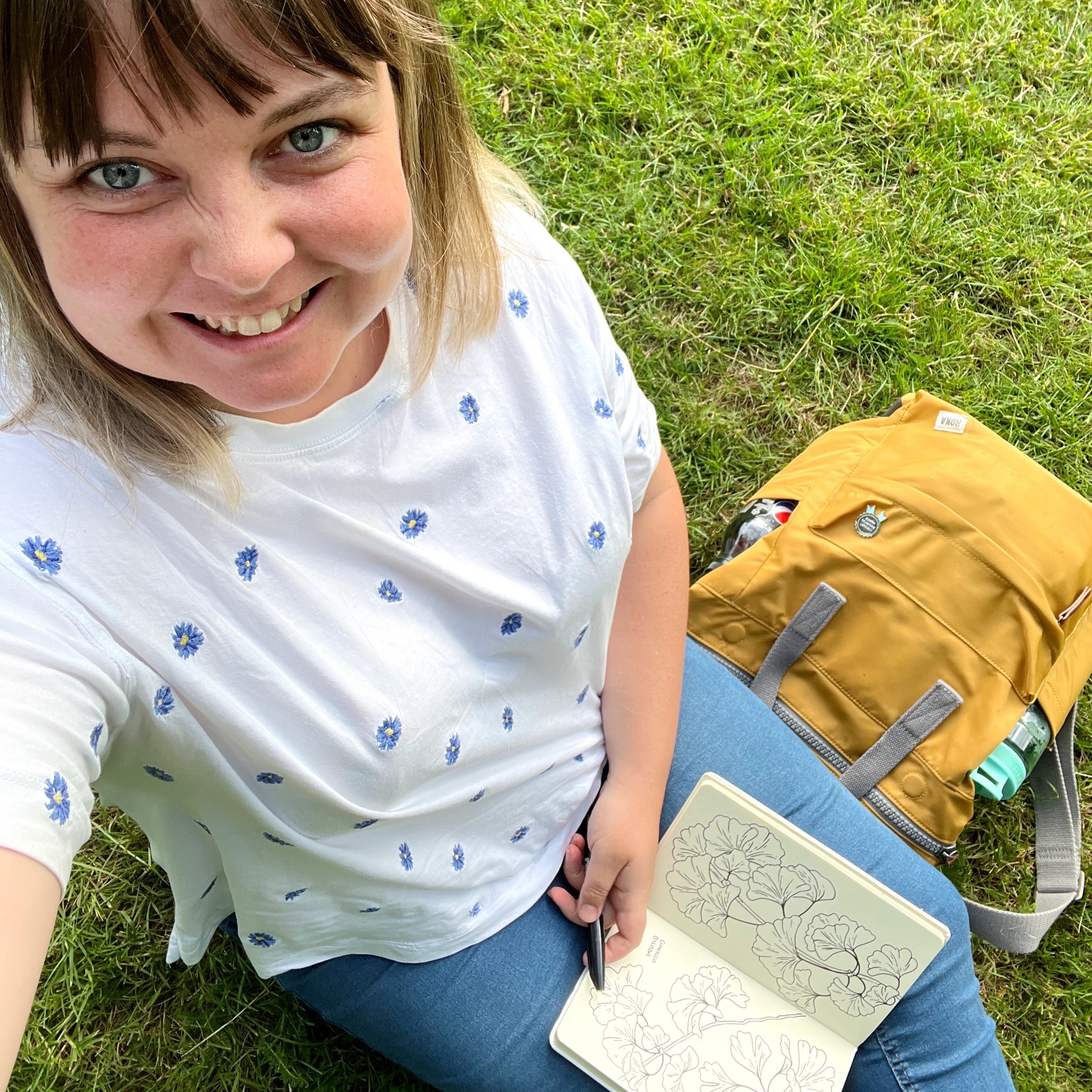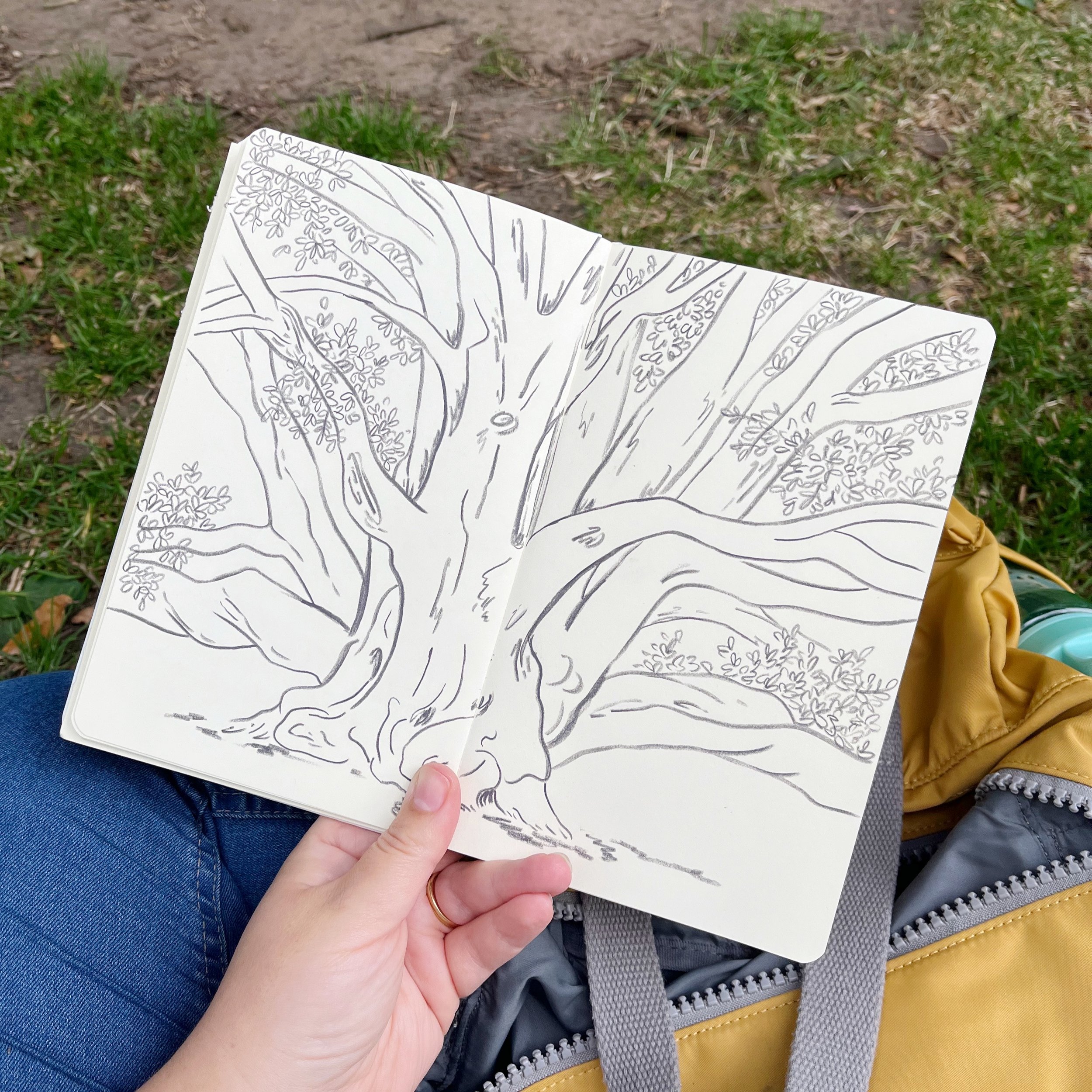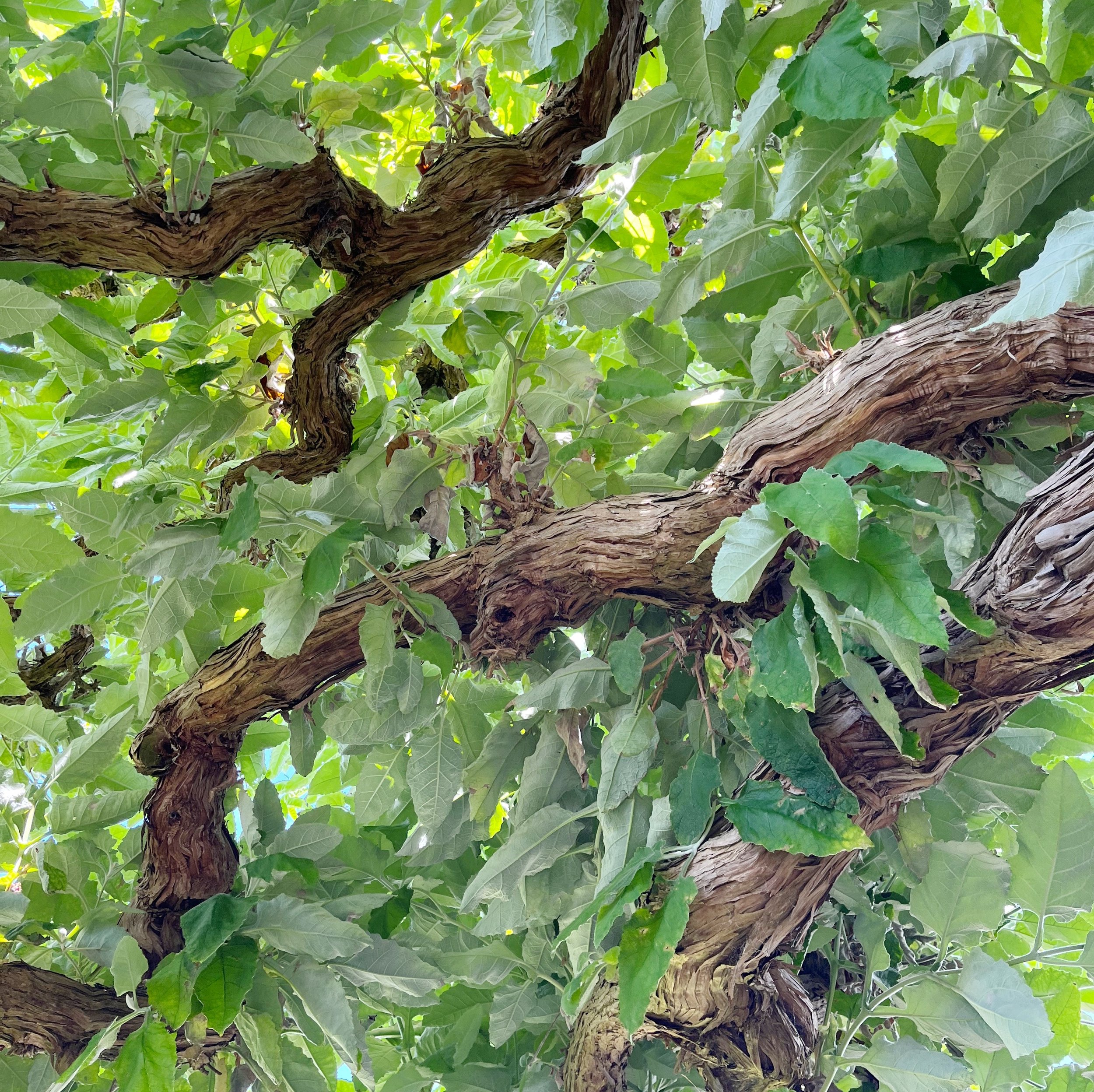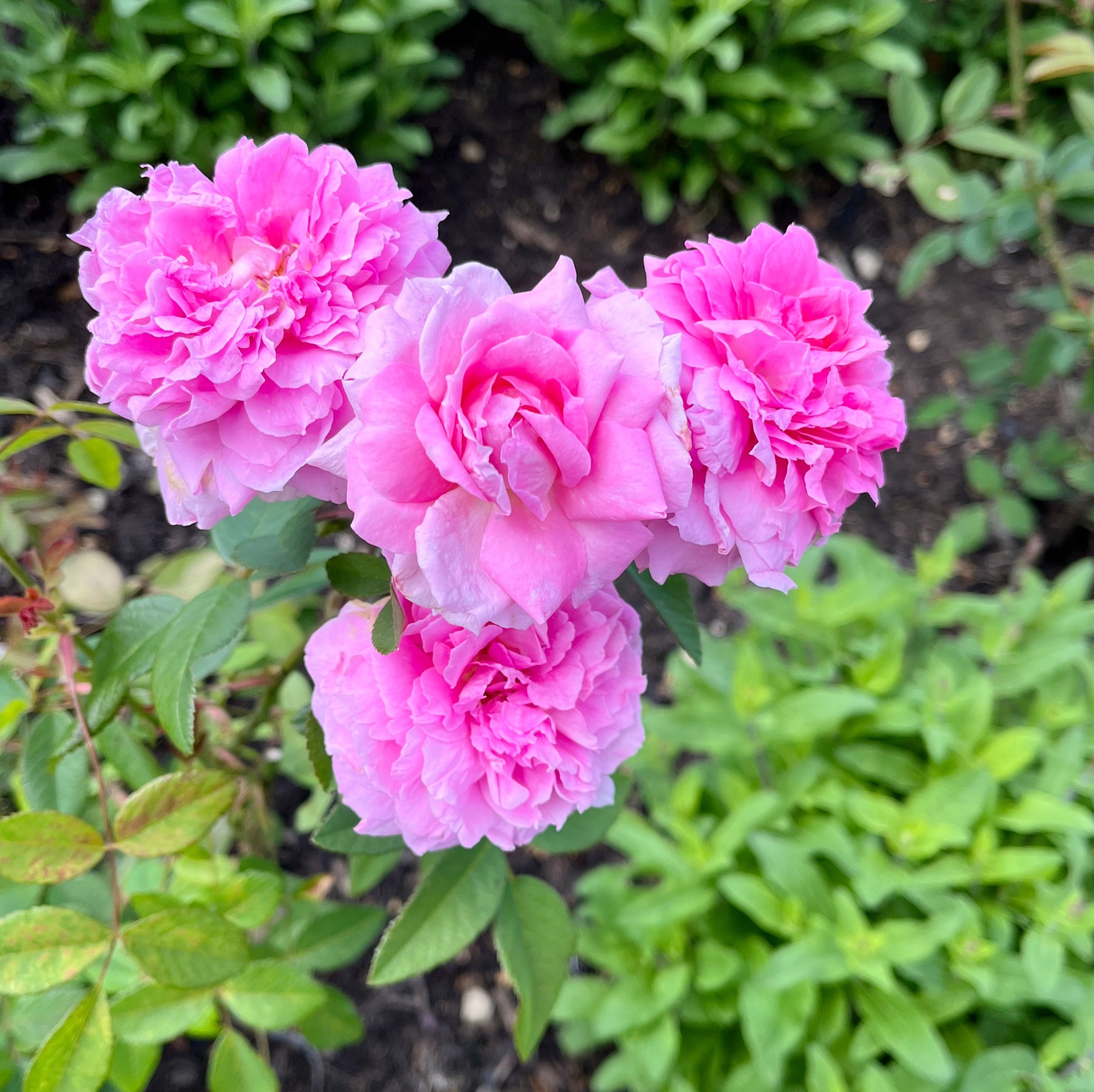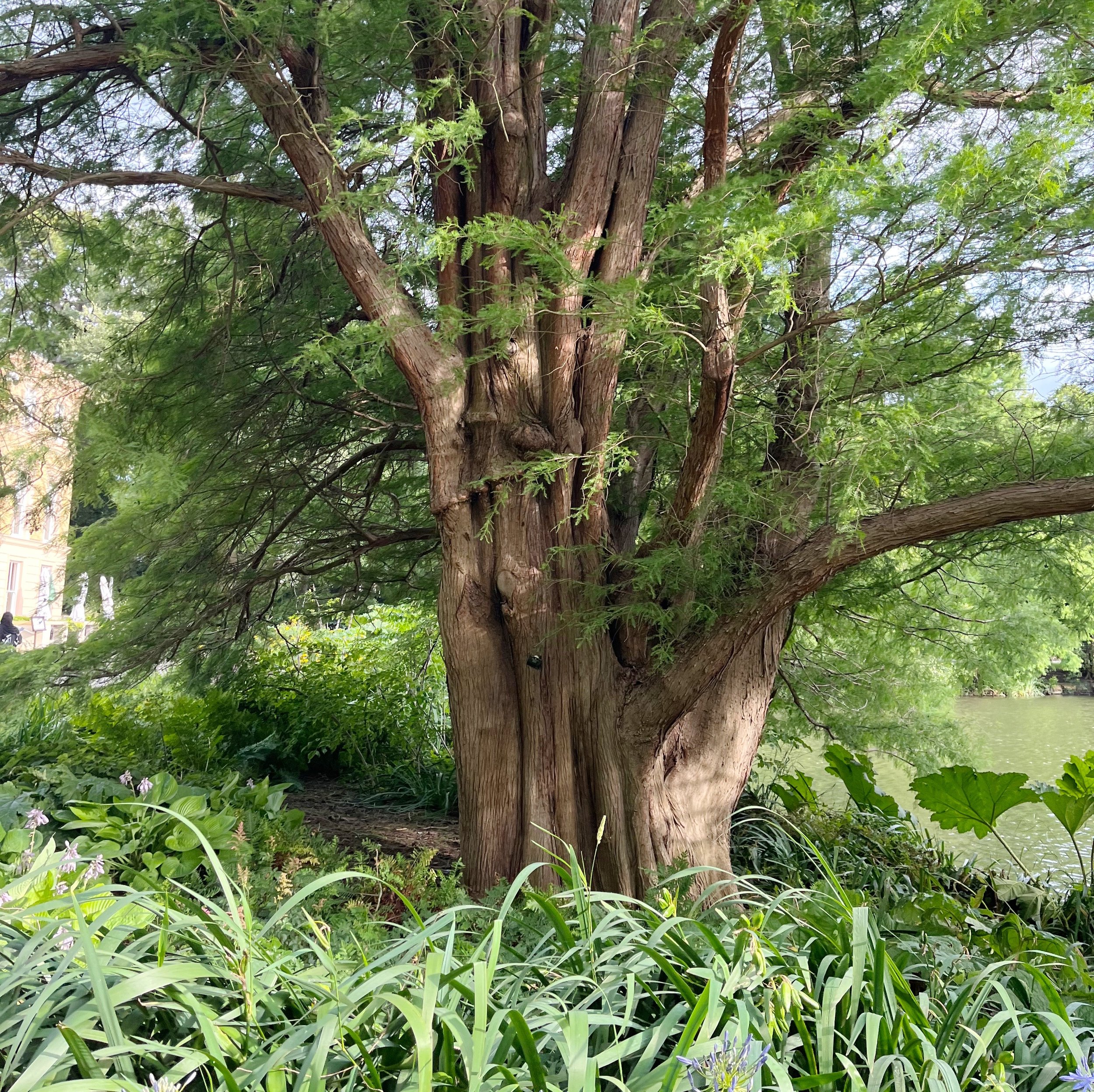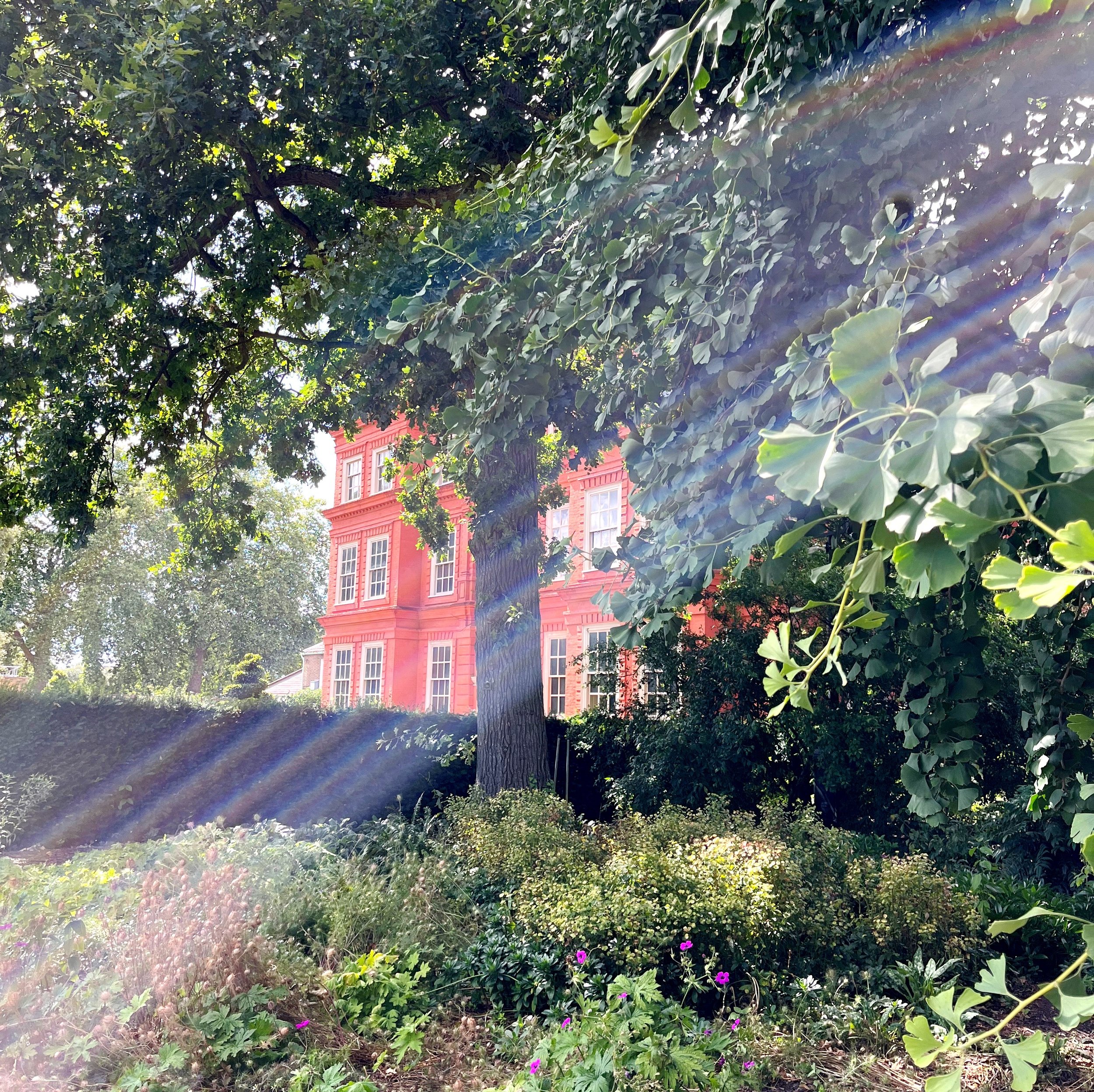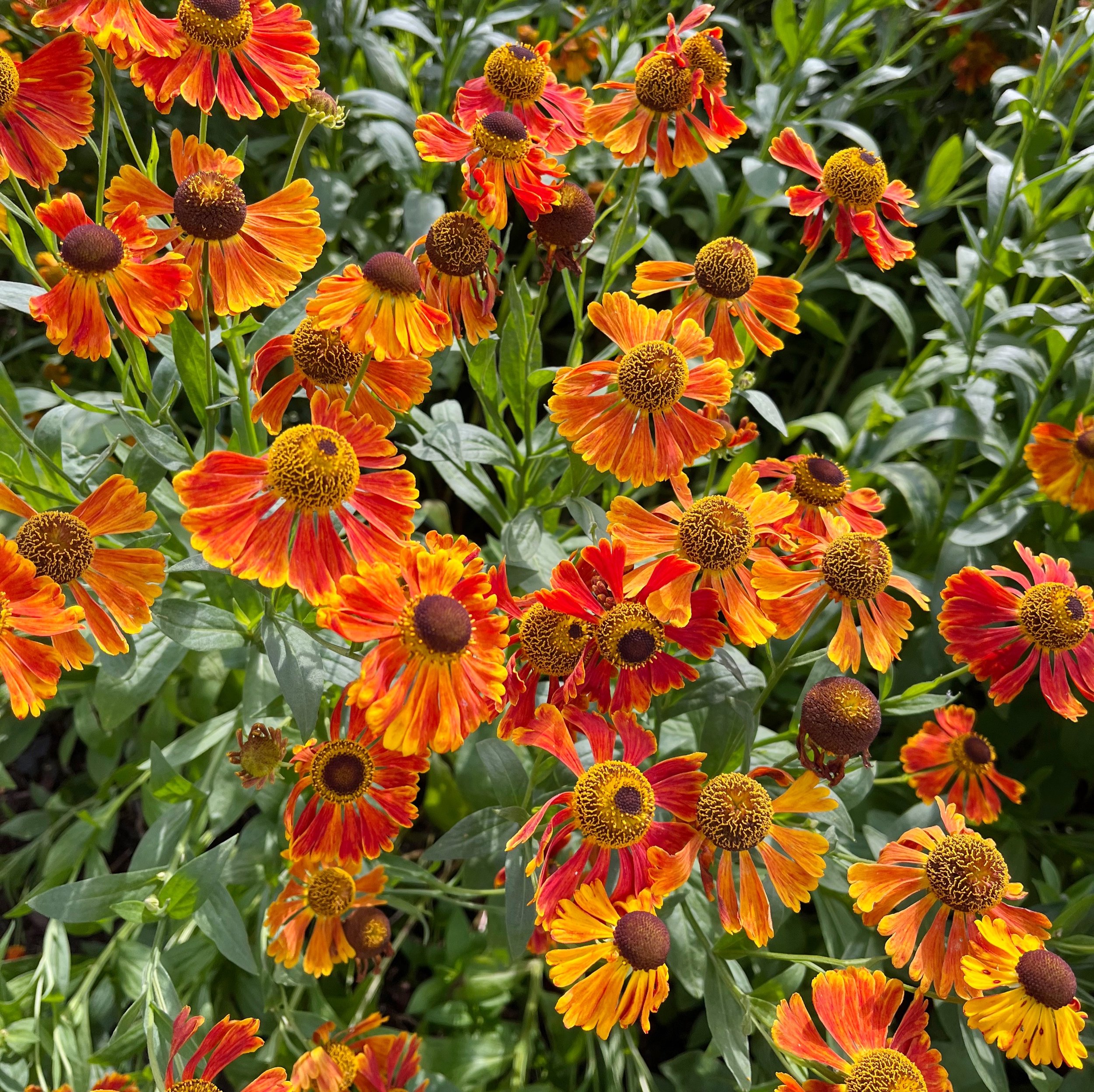Observation + Imagination
This week I headed back to one of my favourite places - Kew Gardens. As always, I spent the day drawing from life and finding inspiration in the nature around me. It was a spur of the moment trip after a not-so-great morning - drawing in a garden is always a great way to clear my head and feel inspired.
While I was there, I was thinking about how my drawings aren’t “perfect” representations of what’s in front of me. Instead I combine my observations with my imagination, and create something that’s “mine” out of what I’m seeing. For the rest of the day I paid attention to where my imagination was coming in to my drawings, and I took some notes ready to share them with you today.
Here’s a few of the ways I use my imagination when I’m drawing from life:
Drawing moving objects
I drew these leaves whilst sat under a tree, with the leaves blowing in the wind. The constant movement means that I can’t draw the objects perfectly, constantly losing track of which leaf I was focusing on before the last gust of wind. I switched back and forth between different branches as one was more stable than another. But I combined those together to create my own composition - little details from various branches all brought together to create a unique drawing.
The little robin came and sat with me while I was drawing the tree (it might have had something to do with the snack I was eating at the time too) so I decided to have a go at some quick sketches. He did not sit still at all - his head constantly moved and he hopped around the whole time I drew him. So the drawings are very rough, and far from perfect, and I had to fill in certain elements from my imagination (or memory) as he moved before I could finish off his face.
Combining view points
Something I do quite often, whether I’m drawing from observation or back at my desk from reference images, is combine different view points.
This sketch of the heron on the lake is a great example of this. The lake was covered in lilies and lily pads, but I chose to pick out one in particular and bring it to the foreground at the bottom of the page, so I could pay more attention to the shapes and details in the flower. The heron itself was the main focus of the image, so I put that in the centre of the page but stripped back the amount of lily pads in the scene, so it didn’t get too “busy”. For both of these steps, I was stood by the lake as there was no where to sit in view of the heron. For the background, I moved further away to a bench and drew some of what I could see from there. This means that the actual scene I drew doesn’t exist, I pieced it together from different view points. To bring the whole scene together I then filled in some gaps from my imagination, with detail lines in the water and extra foliage in the background.
This is one of my favourite ways to work as it’s a great way to fill a page without feeling tied to the exact view in front of me.
Filling in the gaps
As I mentioned above, combining view points often means filling in the gaps. This is something I do a lot, usually involving leaves and foliage. If I draw a stem but make it a little wonky, I’ll add another leaf to make it look more in place. Or if the negative space is too much on a page or isn’t sitting quite right, I’ll add in some more leaves to make the page more balanced. These extra leaves will be based on the shapes I’m seeing in front of me, but generally drawn from my imagination to make them fit the gap.
Making up the details
It’s easy to get caught up in the smaller details in a sketch, but it’s tricky to get them “just right” when drawing from life. Often I’ll draw the main shapes and elements from observation, and then add in the details from my imagination.
A great way to “force” this is to draw from a distance. I drew this tobacco plant while I was sitting further away from it (I’d been sat drawing the palace sketch and spotted the pretty pink flower in the distance). I could base the main outlines, layout, petals and leaves from what I could see, but I was too far away to focus in on the details, so those were filled in from imagination at the end of the drawing.
Embrace mistakes
This is a big one. Mistakes are frequent when drawing from life (especially when I’m drawing while standing, or drawing in the snow!)
I’ve learnt the best thing to do is embrace them. I very rarely rip out a page or erase a drawing. Instead, I’ll turn the “mistake” into something. Often that will be an extra leaf or petal, or even a fold in a leaf that wasn’t originally going to be there. This turns a mistake into something creative, and makes the drawing truly “mine” as it’s come from my imagination.
Overall, I think an important thing to remember is this:
When drawing from life, not every single detail and element needs to be perfect. It’s your interpretation of what you’re seeing, and your imagination is what makes it your own.
Here’s a few more snaps from my day at Kew:
Want posts like this in your inbox?
Sign up for my Substack and get these post sent straight to your email.


